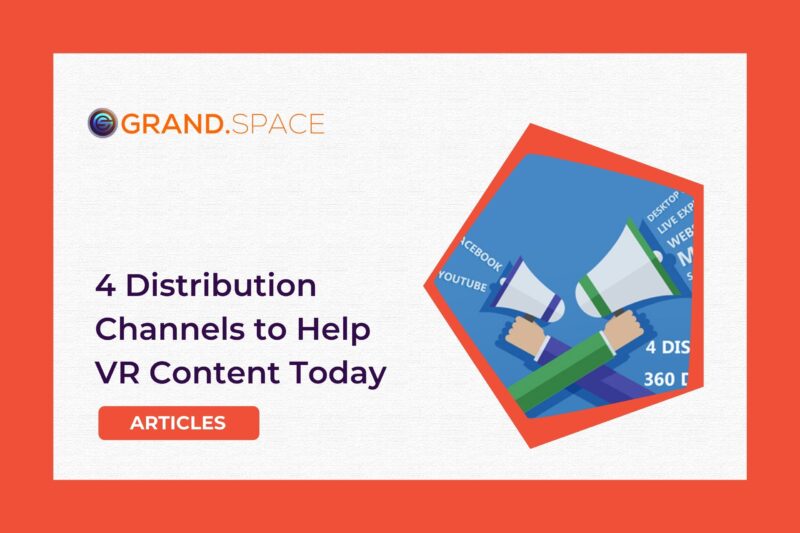At the recent digital marketing conference, DMEXCO, there were two big takeaways that both marketers and publishers must take note of. First was the premise that consumers are demanding experiences. Second was that they don’t want to be “told” stories, they want to be immersed in them.
Adobe’s vice-president of marketing strategy, Suresh Vittal Kotha, phrased it well when he said that marketers are now “selling experiences; products and services are just along for the ride.” That sentiment was echoed in another session with Matt Gee, the head of digital transformation at the digital creative agency Isobar. He said it’s a simple premise:
“If we make better experiences for our customers, they will transact more with our brands,” he said. “It really is that simple.”
Luckily, two technologies that are finally coming of age, namely spherical 360 degree content and Virtual Reality, can address both issues as they serve as highly effective vehicles for immersion while simultaneously delivering a truly sensorial experience. The best part is they can be leveraged today and below are four effective distribution channels that enable brands to satiate the consumer demand for a whole new level of brand engagement.
1. Live Activations
Whether it’s at a trade show, a fair, a sporting event, or an in-store activation, 360 and VR can be used at live events to connect with consumers in ways never before possible. Executions can range from the simple to the elaborate with the more simple employing the use of mobile VR devices like Samsung GearVR or Google Cardboard.
More elaborate installations, what are called 4D VR experiences, can also be implemented. These typically include the use of higher end VR systems like the HTC Vive, Oculus Rift or soon to be released Sony Playstation VR. These experiences can also feature everything from haptic vests, scent dispersion contraptions, wind machines, stationary bicycles, harnesses and more to heighten the senses. Regardless, they are able to create high levels of immersion – what is called presence, and hopefully leave users feeling more connected to a brand.

2. Social Media
Another channel for distributing 360 & VR content is via social media platforms like Facebook and YouTube. Both have made it relatively easy to share immersive 360 & VR experiences with consumers and the numbers show that people are interested. From insurance and automotive brands to consumer products and entertainment properties, millions of eyeballs are watching this content. And why shouldn’t they, it’s different, engaging and truly puts the consumer in control because they’re in charge of what they look at. This content also provides context which can add a whole new level to any experience.

3. Ad Units
Rich media ad units are another available channel that provide the opportunity to scale your 360 / VR content investment. And to be clear, I’m not talking about putting ads into VR experiences like games and the like that people can enjoy via a Samsung Gear, HTC Vive, Oculus Rift or PlayStation VR. I’m referring to ads that can live on any of today’s web browsers or apps. We like to call these “super” rich media ads because they’re far superior to the rich media ads to which most advertisers, publishers and consumers are accustomed. Virtual reality and 360 degree content can in fact occupy today’s traditional digital ad spaces like banners, skyscrapers, leaderboards, etc.

By putting this content into today’s digital ad spaces, a marketer can turn an ordinary banner ad into the spectacular. Ads take on a new life and the level of engagement is significantly heightened. Creatives now have an entirely new ad canvas to work with that also features 10x the real estate space!
These 360 degree and VR ads can incorporate a great variety of art assets and can take on a myriad of features and interactivity. They can serve as endless rabbit holes in which the consumer can direct their ad experience and explore brands like never before. And what’s even more appealing is that they can also be created by using existing 2D assets. This means it isn’t always necessary to go through the expense of creating a 360 / VR video experience. That’s because 360 and VR ads can be created with a great variety of art assets such as:
- 360 video & photos
- Standard video & photos
- CGI environments
- 2D graphics
- 3D graphics
Clearly 360 degree and Virtual Reality are technologies to which marketers and publishers need to pay attention. They present the next level of brand and ad engagement by delivering on two key desires – they offer engaging, memorable experiences coupled with highly immersive storytelling opportunities where the consumer truly feels part of the whole. Perhaps the even better news is that there are multiple channels that exist today which can be employed to distribute this captivating content. Which begs the question, what are you waiting for?
